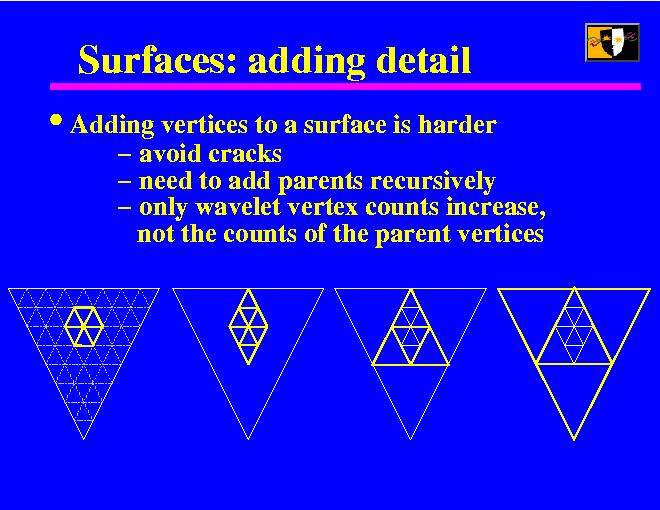
When we generalize the algorithm to deal with polygonal surfaces, the basic rules stay the same: we increase the reference counts when adding wavelets, and decrease them when removing. Modifying geometry is done exactly the same way as in the polyline case. However, adding new vertices and triangles is now a bit harder.
In this example, we want to introduce a fine resolution wavelet with support 1, and currently only the big triangle exists in the mesh. We first have to add all the neighboring vertices at the same level to contain the effect of the wavelet, and then we add recursively parents so that all the vertices lie on some existing edge. Otherwise we risk creating cracks. The picture shows the sequence of the triangles that were created.
It should be noted, however, that we only increase the reference counts at the wavelet vertices. The supporting parent vertices that were created have zero reference counts.